Plant description
The Dracaena genus, more popularly known as Snake Plants, is a very popular houseplant option for beginners and experts alike. It’s easy to care for, can adapt to various environments, and boasts a variety of striking foliage.
It’s primarily cultivated for ornamental use as an indoor plant and for outdoor growing in subtropical and tropical climates. Species can range in size from a few inches up to ten feet and can grow with colors and shades of red, cream, and yellow.
Plant facts
| common name | Snake Plant |
| botanical name | Dracaena spp. |
| no. of species | 120+ |
| family | Asparagaceae |
| biological life cycle | perennial |
| foliage | evergreen |
| mature size | 8 inches to 8 feet |
| time to maturity | 1-2 growing seasons |
| origin | Western Africa from Nigeria to Congo, southern Asia, northern Australia |
| light conditions | bright, indirect light |
| soil type | well-draining potting mix |
| soil pH | slightly acidic, slightly alkaline, or neutral (5.5-7.5) |
| USDA Zone | 9-11 |
| toxicity | slightly toxic to humans, toxic to pets |
The genus Dracaena encompasses around 120 species of plants and falls under the Asparagaceae family. Some of the species can also be identified as a succulent type. They are native to mostly Western Africa between Nigeria and Congo, with a few species in southern Asia and northern Australia.
In recent years, the genus Pleomele and genus Sansevieria were recategorized to fall under the Dracaena genus. This means that the very popular species Sansevieria trifasciata is now referred to as Dracaena trifasciata.
Read more about the different types of dracaena plants.
Popular varieties
- Dracaena trifasciata (prev. Sansevieria trifasciata) – This is one of, if not the most, popular Snake plant species. Its foliage boasts sword-shaped leathery dark green leaves with bands of pale green. It commonly goes by the name of viper’s bowstring hemp or mother-in-law’s tongue plant.
- Dracaena trifasciata laurentii (prev. Sansevieria trifasciata Laurentii) – The Laurentii species is a popular variegated variety of the trifasciata species. In addition to the dark and pale green foliage, each stripe is also strapped with yellow trim. Get a Snake Plant Laurentii here.
- Dracaena hahnii (prev. Sansevieria hahnii) – This species has dwarf-sized leaves and is nicknamed bird’s nest for its foliage formation.
- Dracaena cylindrica (prev. Sansevieria cylindrica) – This cylindrical snake plant species grows thick and round striped dark green leaves that can grow 3-5 feet in height.
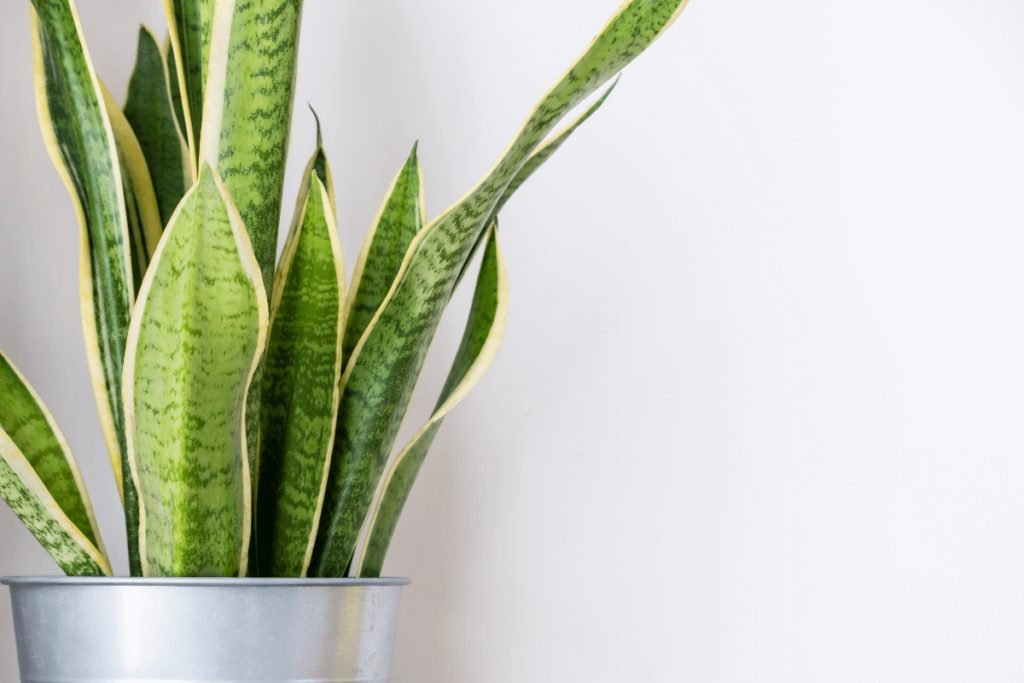
How to take care of a snake plant
Light 🔆
Best light: bright indirect light
Snake Plants can survive a wide array of lighting conditions from indirect sun to a semi-shaded spot. But although it’s very flexible, it’s best to avoid placing it in a location with direct sunlight as this can scorch and burn the foliage.
In bright light environments, a Snake plant will grow faster and boast a greater array of brighter colors and variegations.
Water 💧
Water needs: keep the soil moist, but not soggy
Snake Plants generally do not require much water and can be watered about once every 1-2 weeks. It’s optimal to keep your snake plants’ soil ever so slightly moist but not soggy, as many species of snake plants are prone to root rot. Because of this, it’s a good idea to water snake plants from the bottom.
Snake Plants are also more tolerant of periods of drought. It’s likely for the tips of leaves to turn brown if they are experiencing drought-like conditions or under-watering. Root rot is also easy to spot, brown soggy patches will begin to appear on a Snake Plant’s foliage. If this occurs, stop watering and read about how to treat root rot in snake plants to prevent further trouble like fungal infections.
Some Snake plants can also be more sensitive to fluoride, which can commonly be found in tap water. With that in mind, it’s preferable to use purified water.
Read more about how often to water snake plants.
Humidity 🌫️
As tropical plants, Dracaena prefer higher humidity environments. And although they are able to adapt to lower humidity environments, these plants will do much better in humid conditions. If you happen to live in a region with dry air, placing a pebble tray with water or a humidifier in the area can also help to boost moisture in the air.
Temperature 🌡️
Snake plants are able to adapt to a wide range of temperatures, between 60°F (16°C) and 85°F (30°C). For optimal growth, it’s best to avoid areas that are drafty, and a temperature at night below 50°F (10°C).
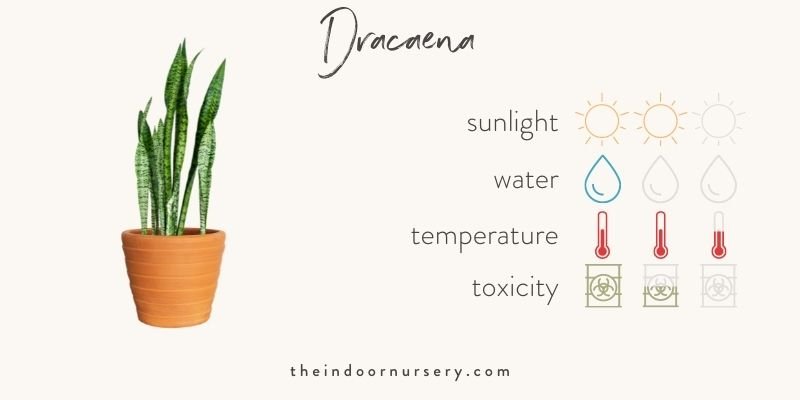
Fertilizer 💩
Snake plants are generally light feeders. Choose a balanced fertilizer for snake plants. During the growing season in spring and summer, apply the fertilizer once every two weeks to one month. In the fall, feeding should be reduced to once every 1-2 months. And to avoid any complications, halt fertilizing in the winter months when they are in dormancy.
Soil
The most important thing a Snake plant needs is well-draining soil as they are very prone to root rot. It is common to amend potting mix with propagation sand or perlite to improve drainage and aeration. Even better, an all-purpose cactus potting mix or succulent soil are popular options for a Snake plant.
Snake plants can tolerate alkaline, neutral, and acidic soil types.
- Soil type: well-draining potting mix
- pH level: alkaline, neutral, acidic
Repotting
As a slow-growing plant type, Snake plants rarely need to be repotted and actually prefer being slightly rootbound. Although, if you notice roots visibly growing out of their pot or in the drainage holes, it’s definitely time for a repot. Another sign of this would be if the soil has a buildup of fertilizers and salt (indicated by a crusty white formation on the outside of pots, particularly those made from ceramic), or if the soil appears to be compacted from watering.
To repot, use the same size pot or one that is 1-2 inches larger, and replace with fresh soil that is well-draining.
Propagation 🌱
Snake plants are easy to propagate into new plants. Roots, tubers, or entire clusters of plants, roots, leaves, and all, can be grown in either water or soil. For best results, it’s best to do research on the individual species for instructions and the most optimal propagation method.
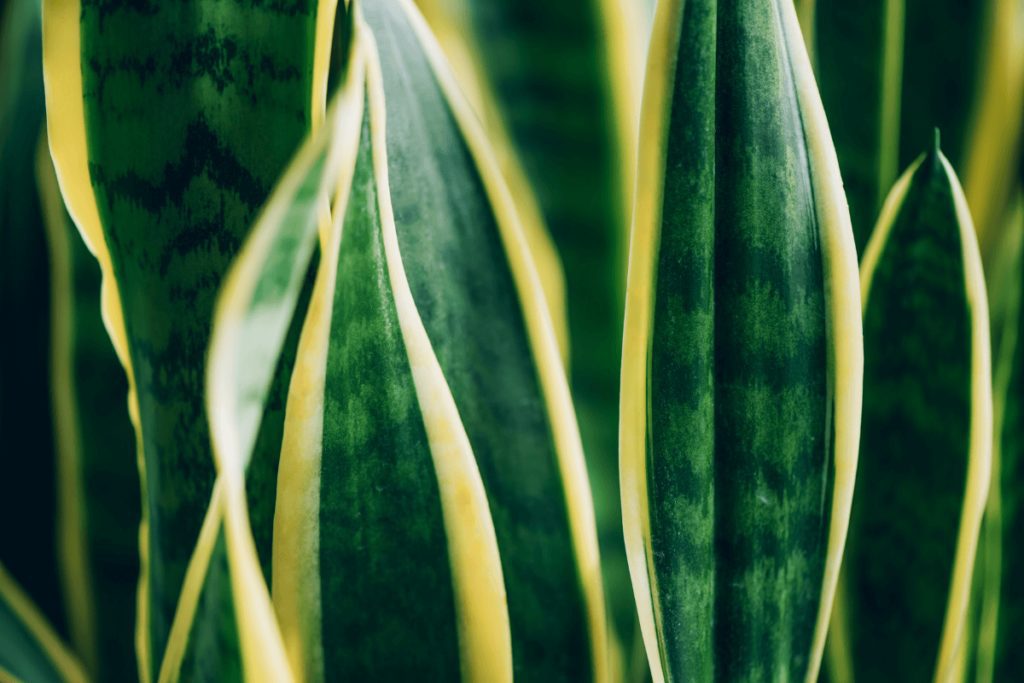
Pruning 🌿
To control the height of Snake plants, its older stems (known as canes) can be cut. This will promote new leaf growth just below the cut, and the canes can be used for propagation. It’s also good practice to remove damaged, dead, or unruly leaves from the soil line.
Pests and diseases 🐛
Pests: scale, gnats, spider mites, aphids, mealybug, and whiteflies
Snake plant varieties are only susceptible to common house pests such as scale, gnats, spider mites, aphids, mealybug, and whiteflies. It’s easy to solve any pest issue with insecticidal soap or neem oil, and it’s best to do this as soon as possible to preserve the health of the plant. Wiping down each plant leaf every so often with water can be a great preventive measure for pests.
Plant care tips
- Using a porous potting material, such as a terracotta pot, can allow moisture to flow in and out of the plant. This is a great way to prevent root rot for the plant.
- Growing Snake plant varieties is one of the easiest and most popular houseplant options for beginners for good reason. It’s best to not overthink Snake plant care and overwater these plants, as they can be very prone to root rot and other similar diseases. It’s best to let them breathe and enjoy growing in a nice home environment!
- Any Snake plant that is grown outside should be within US hardiness zones 10-12.
- Certain Snake plant species are known to flower, although it’s rare for them to flower indoors. Flowering can flourish as white tubular flowers, orange berries, and more. If it is going to flower, it’s most likely going to be during the spring months.
- When doing research on certain Snake plant species, it’s still common to find information under its former genus name, Sansevieria, as opposed to Dracaena. The care and information are still exactly the same although they have been renamed and reclassified.
Common Problems / FAQs:
1. Root rot, black stems
→It’s likely that the soil is not draining well enough, or that the plant is being overwatered. The best practice is to cut away brown, mushy roots and leaves and place a portion of healthy roots into a new potting mix in a new pot.
2. Discolored yellow or brown leaves
→ This can be a sign of overwatering or pests. Overwatering weakens the plant’s health which can make it more susceptible to pests and disease. Use insecticidal soap or neem oil to clear away the pests.
3. Falling or drooping leaves
→ If Snake plants are healthy, their leaves will stand tall and firm. Insufficient light or soggy soil from a lack of well-draining potting mix could be a cause of this happening. Try to move it to a place with brighter light, and change the soil to something with better draining.
Shop our recommendations
- The Best Hydroponic Tower For Indoor Gardening
- 10 Best Worm Composter Bins For Easy Homemade Compost
- The Best pH Meter For Soil
- The 6 Best Dehumidifiers For Grow Tents
- The Best Complete Indoor Hydroponic Grow System
- 5 Best Grow Light Strips For Indoor Plants
- TESTED: Aerogarden vs Click and Grow Smart Garden
- Our *hands on* MARS HYDRO TSW 2000 review (with photos)
- 7 Best Hygrometers For Indoor Plants
- The Best Coco Coir For Your Plant’s Healthiest Root System Ever

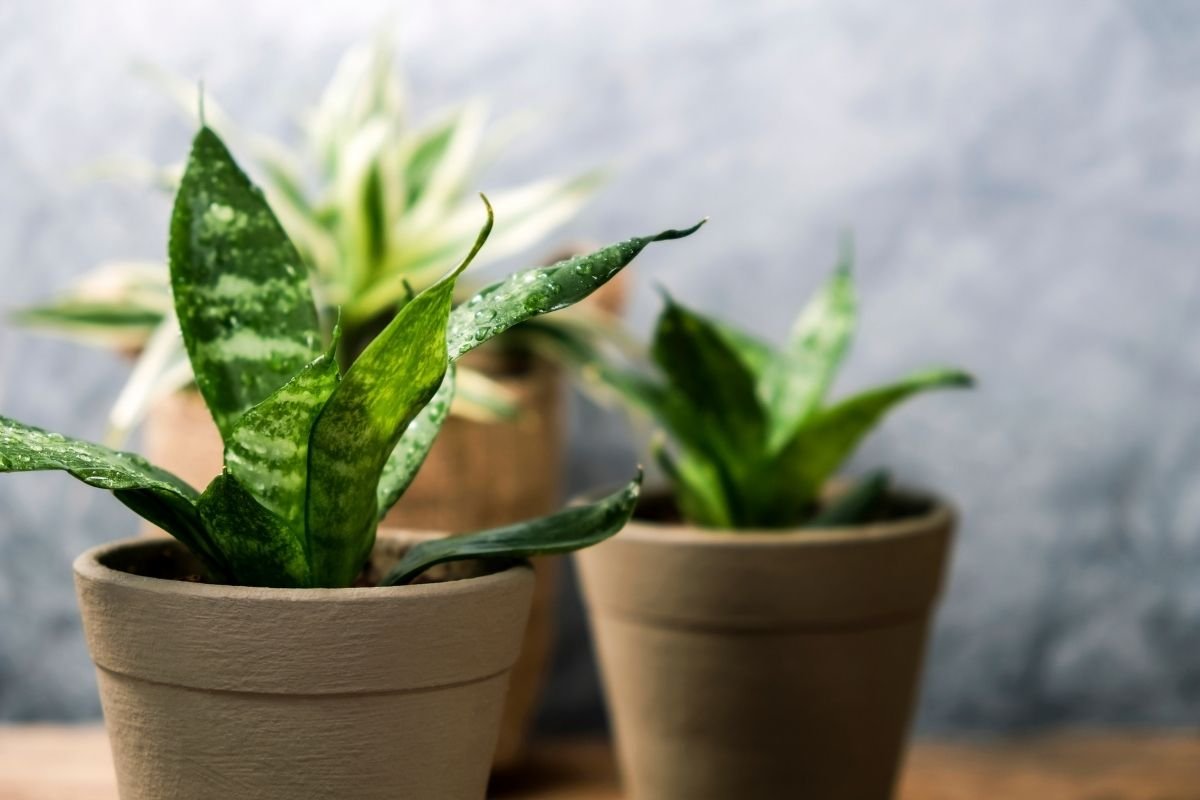
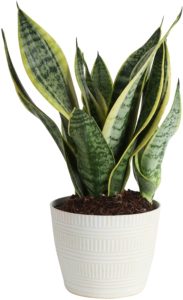
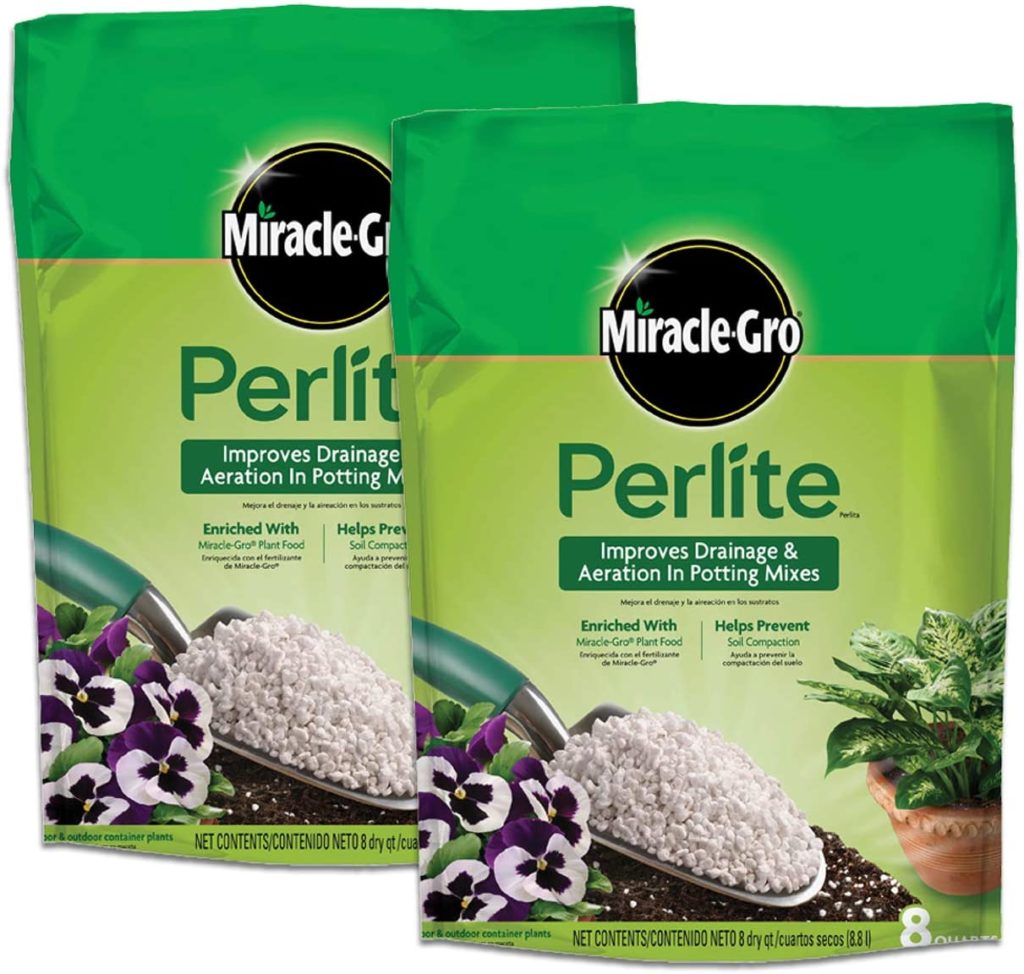
Hey, Marcia! Thanks for reading :) gosh, that's a great idea to double up on your watering globe and spike.…